It has been over two months since the Greater White-fronted Goose was found at Van Cortlandt Park in New York City’s northernmost borough, the Bronx. Andrew Baksh, Birding Dude, has been keeping close tabs on it during his weekly Van Cortlandt Park bird walks since, and I figured it was time that I made a serious attempt at it when I had some time last week. (An earlier attempt, back in December, was half-hearted and unsuccessful.)
I got out of my car and walked up to the parade grounds where large numbers of Canada Geese often forage. And while I was expecting quite a few geese I was surprised by the sheer number present. The entire southeastern quarter of the parade grounds was a carpet of geese! I sighed, set my scope up, and started scanning. It didn’t take long to find the one goose that didn’t look like the others and I had my Anser albifrons for the year.
I was wondering if I would be able to identify this bird as to its origins – Greater White-fronted Geese in the northeastern United States could be coming from Greenland or from the Alaskan and Canadian breeding population. Despite my best efforts (and the assistance of Sibley) I remain uncertain as to which population this individual comes from. What I do know is that those dark spots on the bird’s belly make it really obvious why the species is often colloquially referred to as “Specklebellies.”
Eventually a bunch of the Canada Geese took off and flew over to the lake and the specklebelly went with them. I birded around a little more and then made my way down to the lake where I reconnected with the Greater White-fronted Goose.
If you want to learn a whole lot more about Greater White-fronted Geese, especially the west coast population (and see some great pictures), check out Larry’s post from last week.
If you liked this post and want to see more great images of birds make sure to check out 10,000 Clicks, our big (and growing) page of galleries here at 10,000 Birds.
…










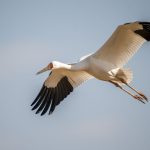

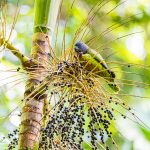
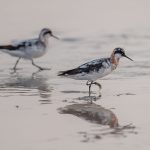
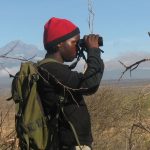
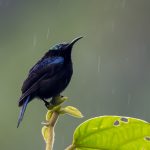
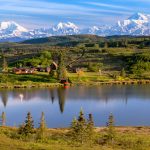
Great sighting Corey! These Greater White-fronted Geese are very difficult to distinguish one sub-species from another. I will be looking for the Tule Goose “elgasi” on my next couple of excursions.
You got some great shots of this goose. It’s weird to see a single Specklebelly hanging with a flock of Canada Geese!
Lousy pics, lousy post, grrrrr! 😉
Looks okayish for Greenland, but the breast and belly should ideally be a bit darker. Furthermore, a clearer shot of the tail would help. The problem seems to be that orange-billed birds show up all around the US that are clearly not Greenlandish and I guess we’ll never truly know until someone looks at the birds on their breeding grounds.
Nice bird whatever its origin – and talking about origin: it surely escaped from the same aviary as the Barnacle, right? You can’t count that for your louse year list!! 😉
Oh yeah: seeing as you are from Queens, you surely don’t want to put a bird on your year list you saw in the Bronx?! Surely not? I mean hey, it could very well have flown over from Staten Island, or – gasp – even from New Jersey!?
If that individual popped into my scope in the UK I doubt I would ID it as anything other than ‘Greenland’ with that bill colour/profile and the narrow white edge to the tail (you can see that Jochen ;))
Having said that I’m unfamiliar with birds that might originate from the western flyway so I’ll agree with Jochen’s note of caution but east coast surely suggests a Greenland origin is much more likely.
@Alan: yes, I can see that, too ( 😉 ), but on some pictures, the dark centre of the tail seems to be slightly “frozen over”, which is not too typical for Greenland. But the most pressing issue at hand is: how do I (we) prevent corey from adding White-fronted Goose (never mind the form) to his year list while I am still so far behind him! 🙂
@Jochen: This goose is the least of your problems – I leave for Florida today!
@Corey: oh yeah? And after Florida? Just you wait until my trips start, just you wait!
And before I forget: have fun and good birding luck down there. Hope a Black Rails stalks you. 🙂